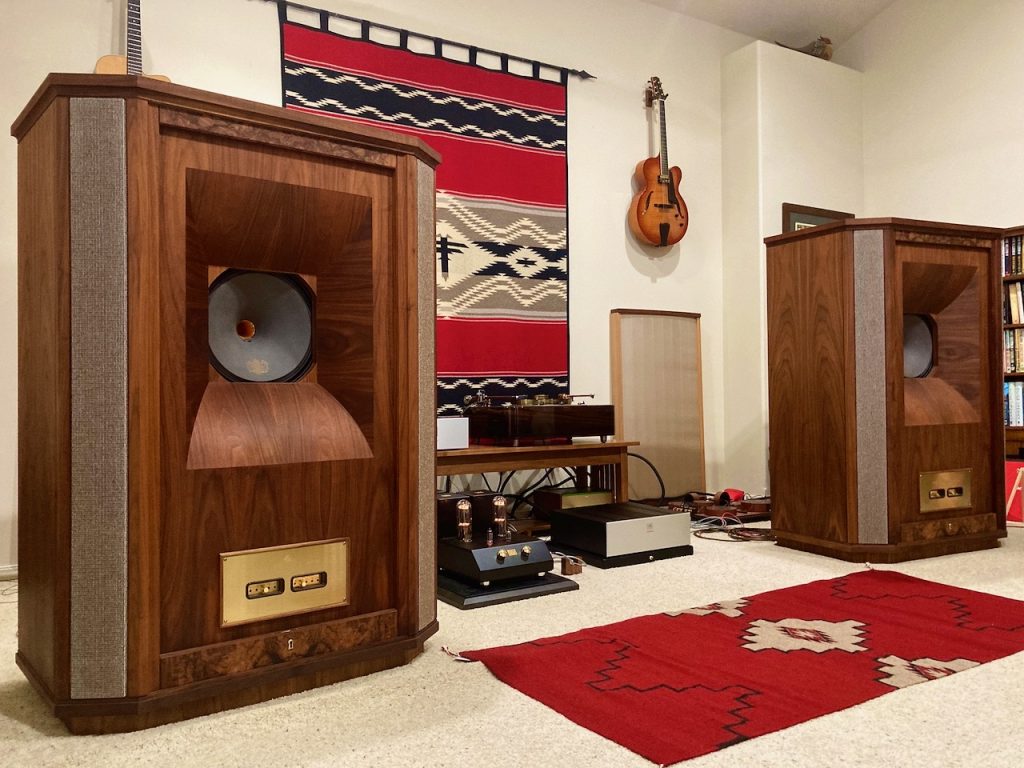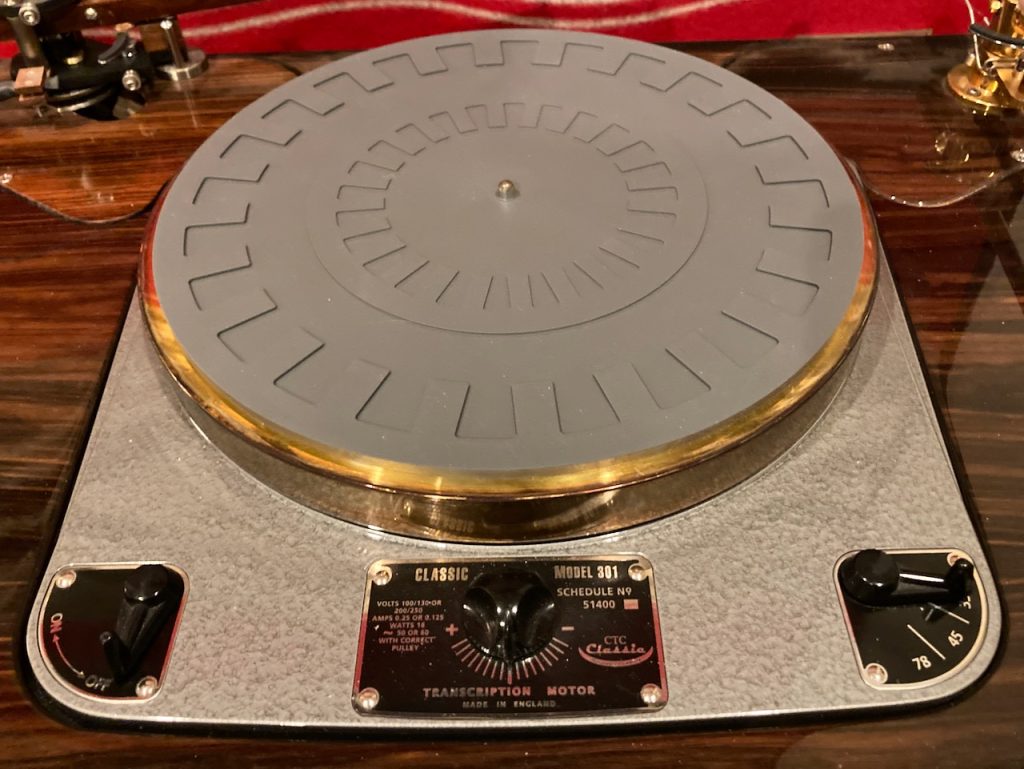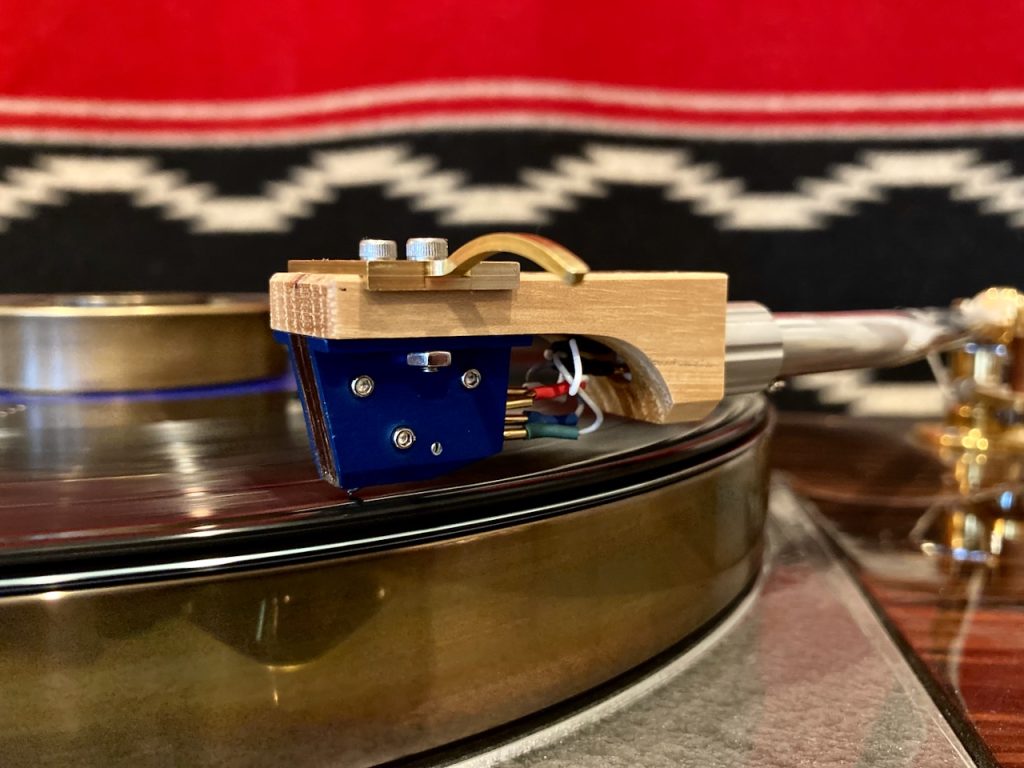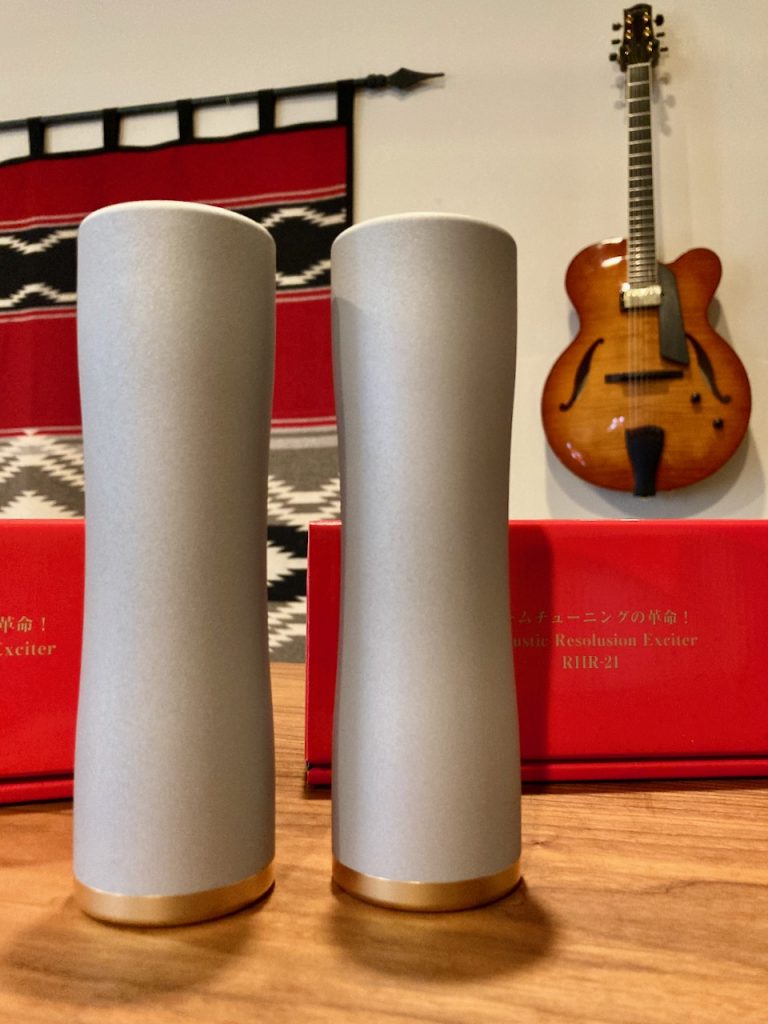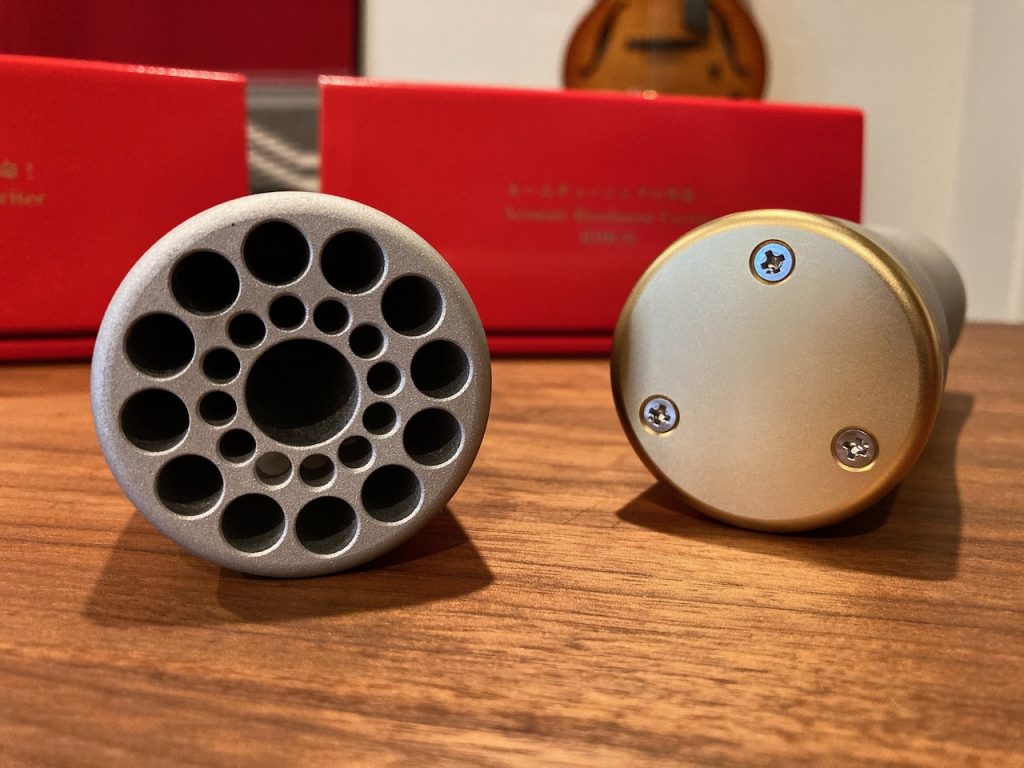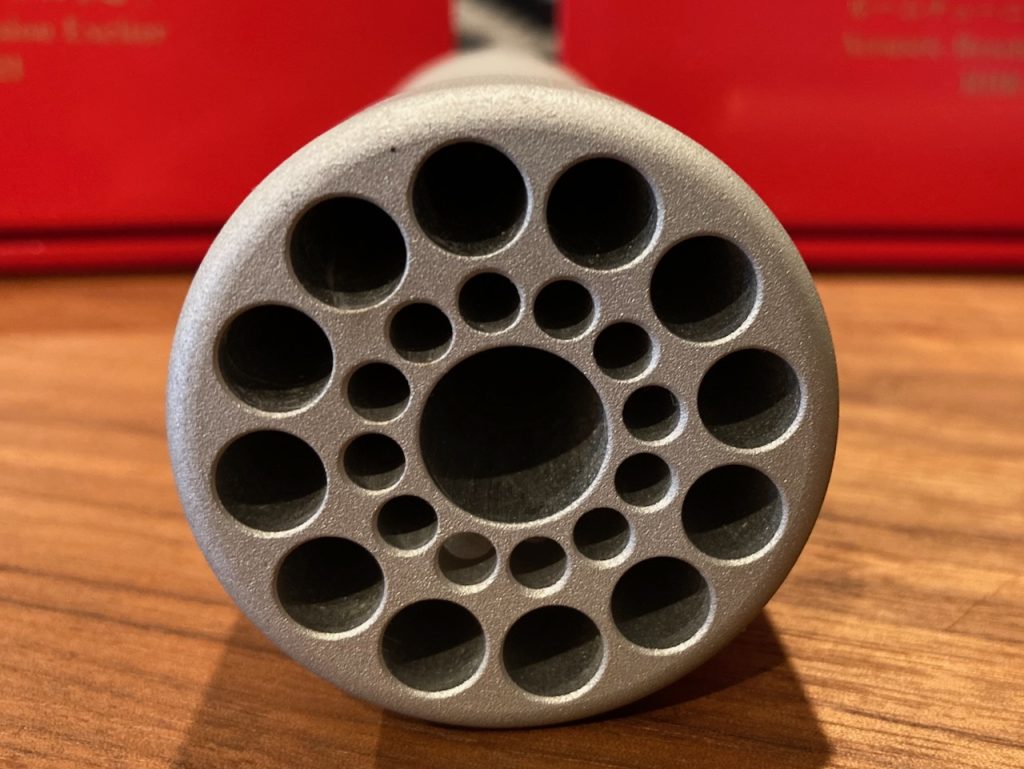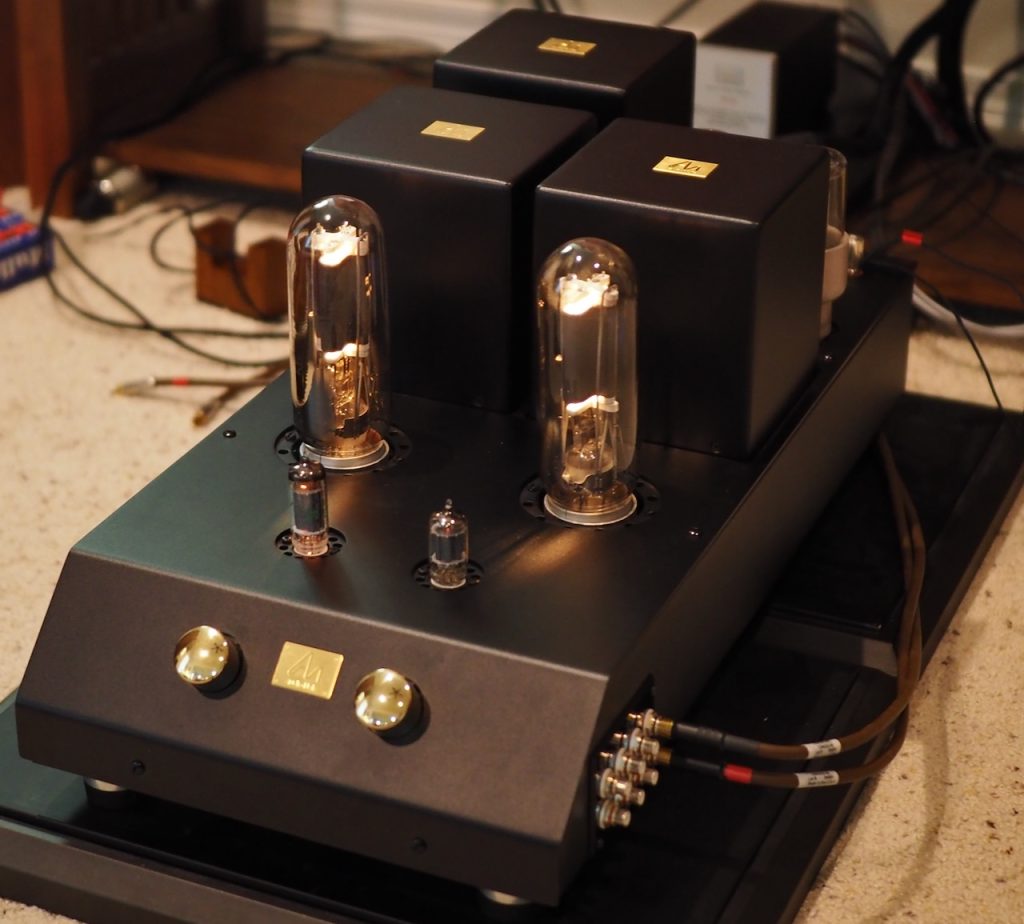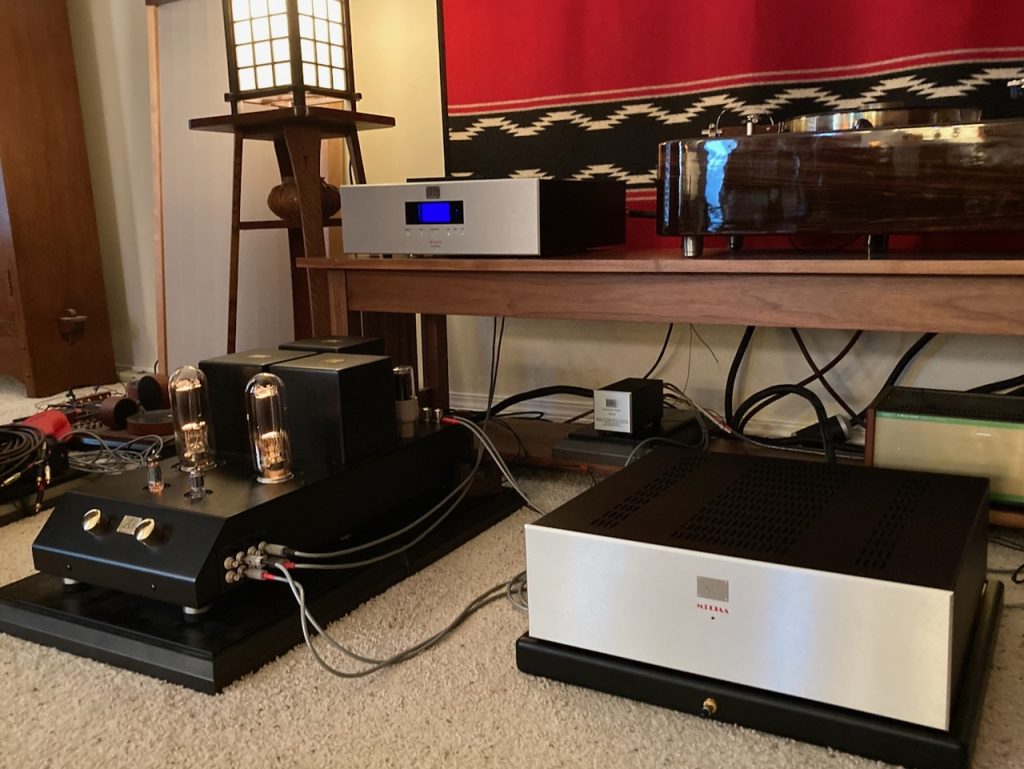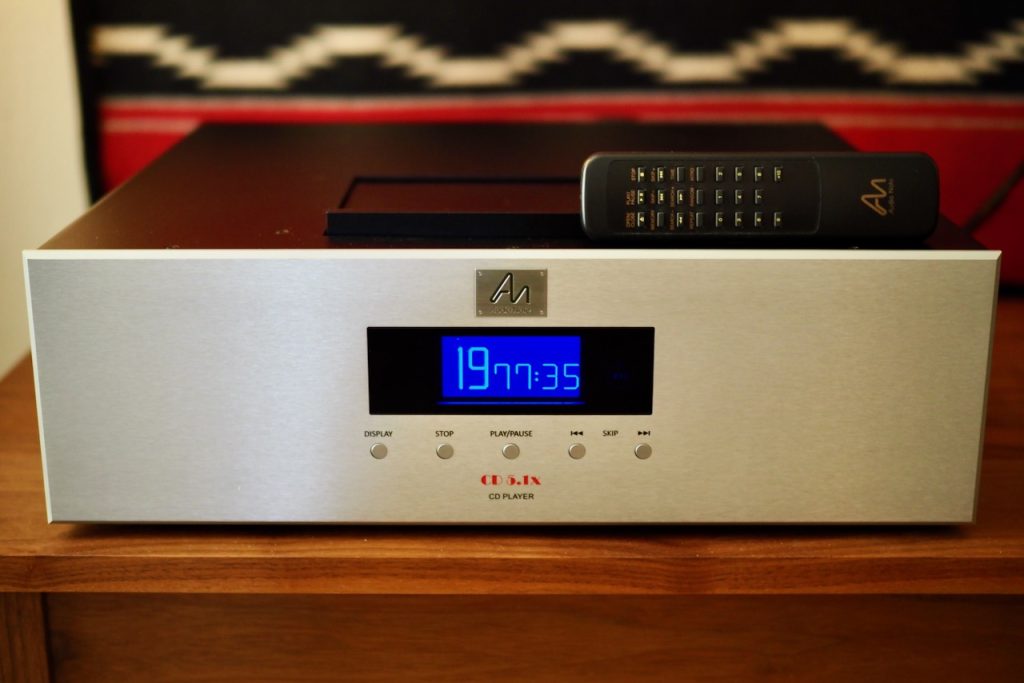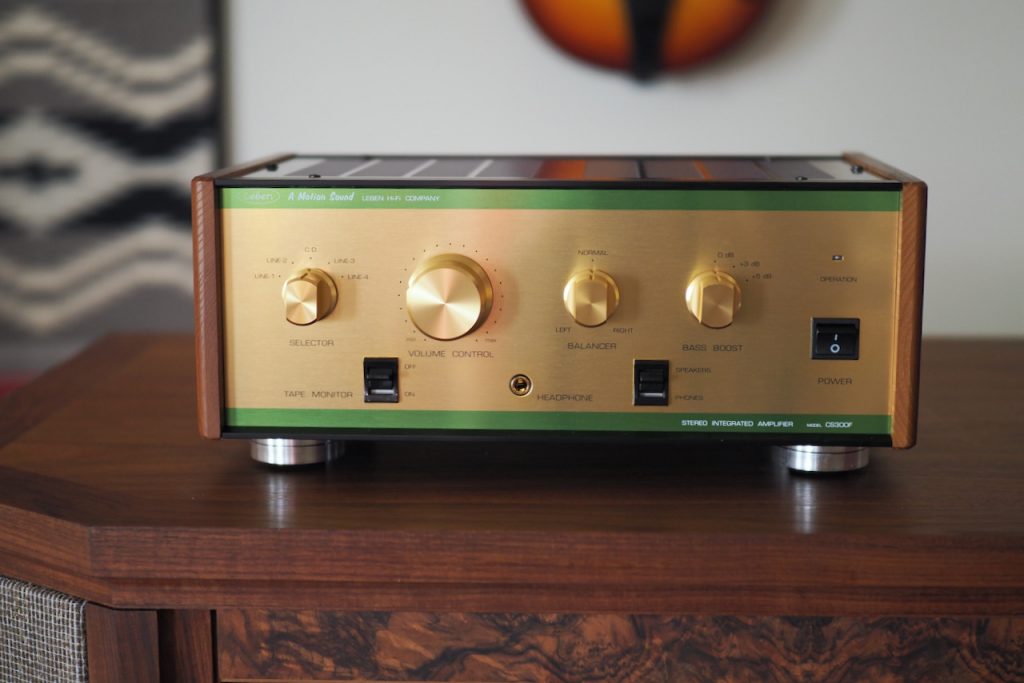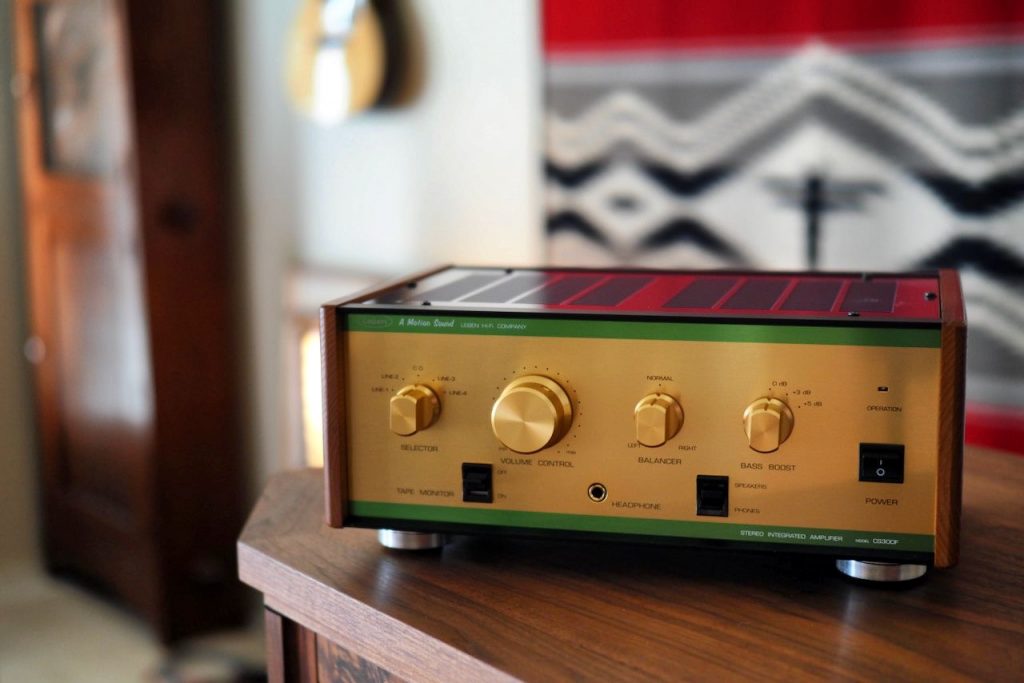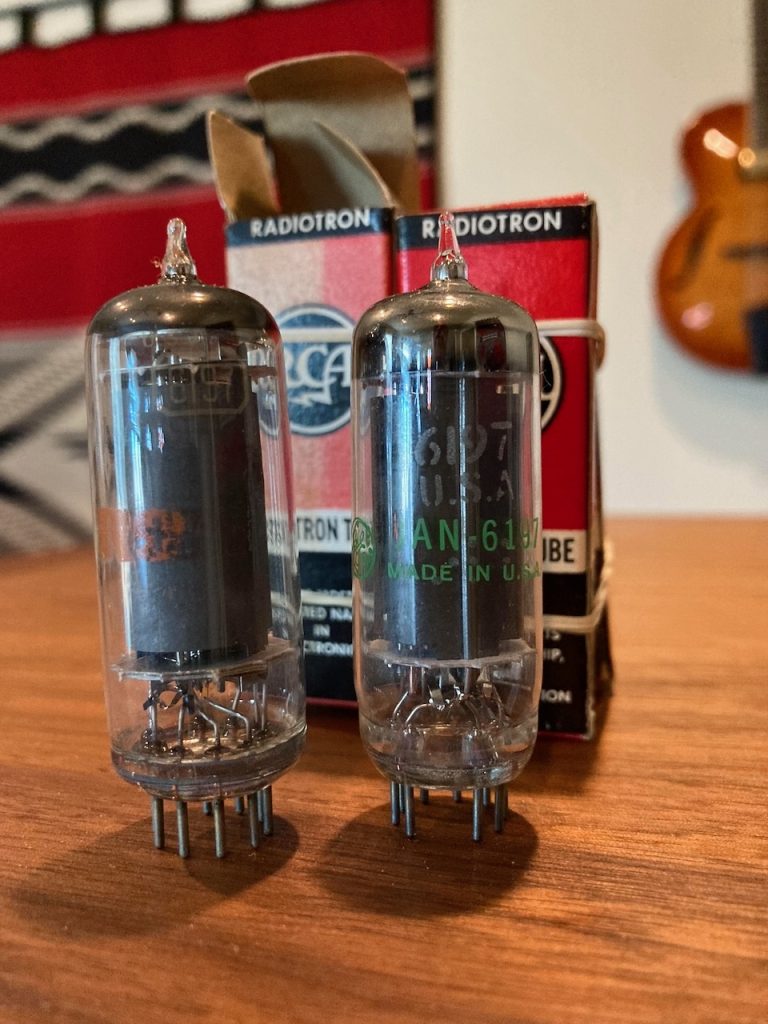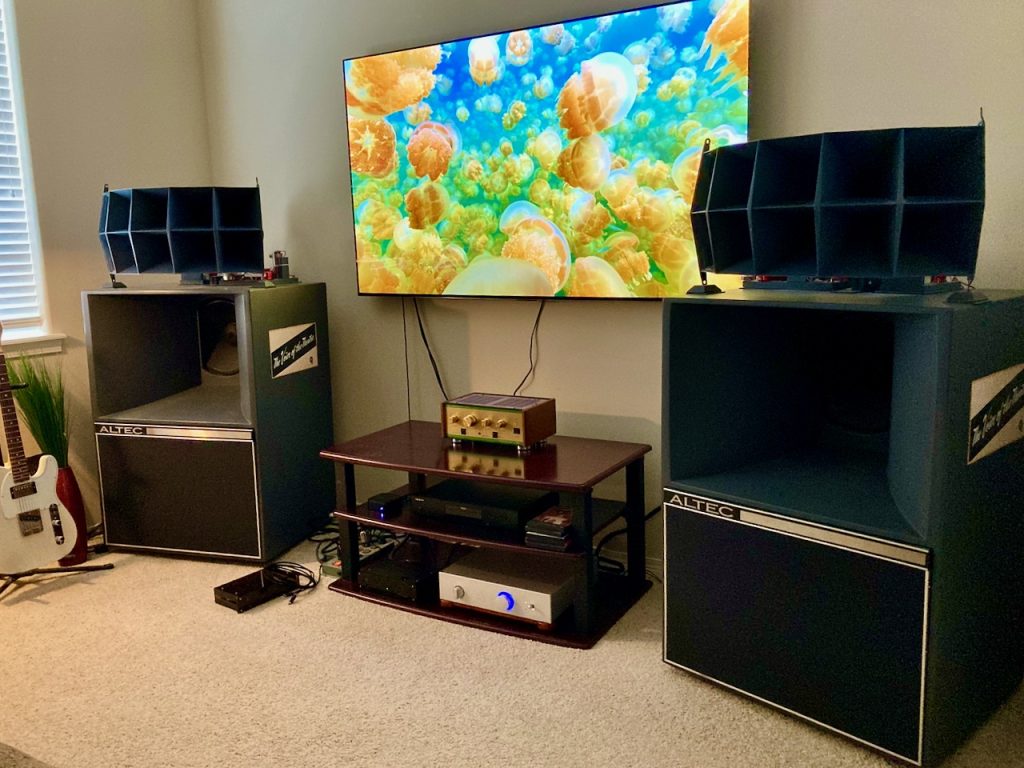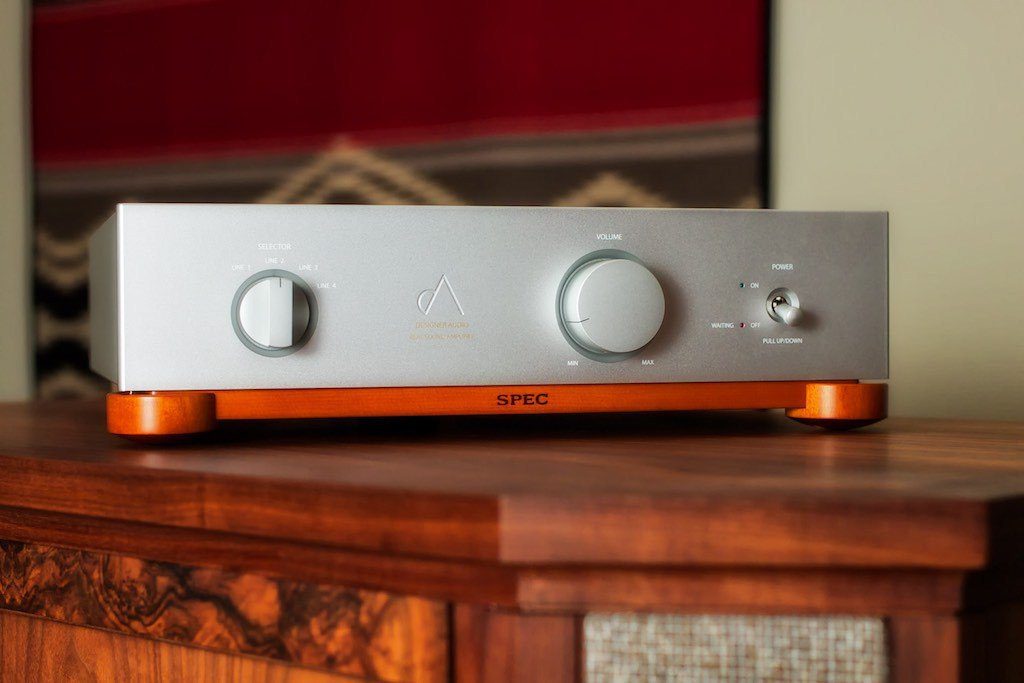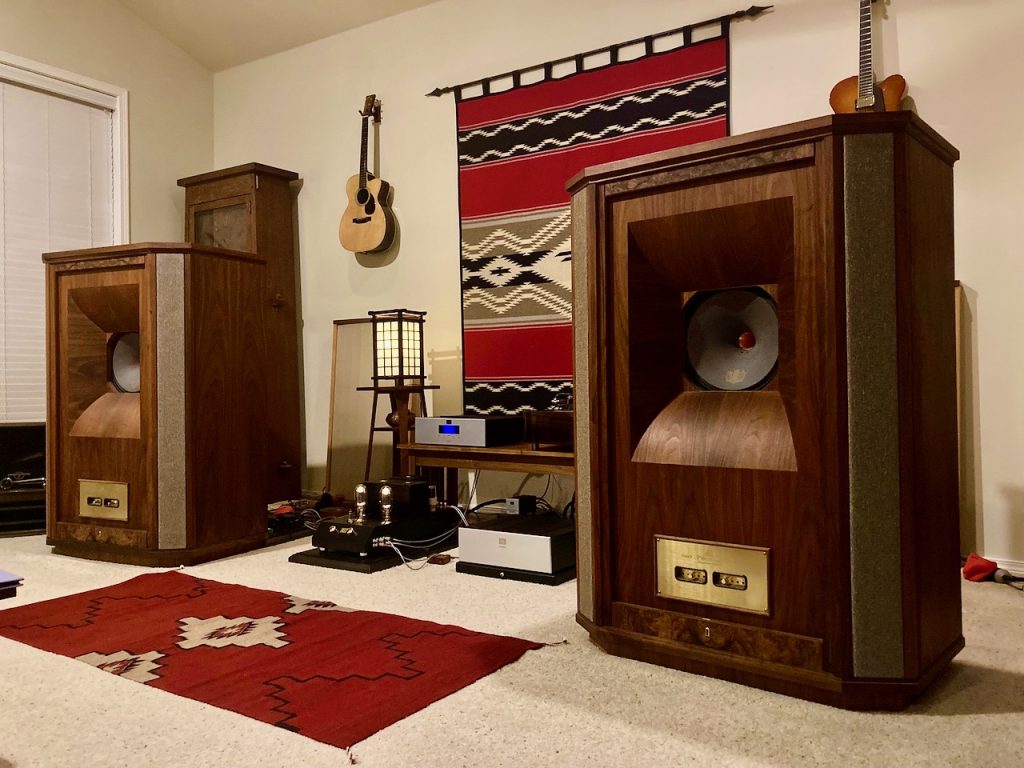Greetings friends, I hope you are well!
It is March Madness here at Jeff's Place! No, no, I'm not talking about basketball, March is all about audio (and video) here at Jeff's Place.
Acoustic Revive
If you haven't had a chance to catch up on the latest Acoustic Revive news yet, you can see it here:
Today's Fresh Catch (HERE): The Acoustic Revive RTS-30 turntable mat, RHS-1 headshell, RHR-21 room tuning devices, CS-3K outlet stabilizer, RCI-3HK cable lifts, and RGC-24K ground conditioner are the latest batch of exotic audio goodies from Ken Ishiguro Acoustic Revive.
First Listen: Acoustic Revive RTS-30 Turntable Mat! (HERE)
First Listen: The Acoustic Revive RHS-1 artisanal headshell! Wowza! (HERE)
First Listen: Acoustic Revive RHR-21 Acoustic Resolution Exciters! Part 1. (HERE)
In Part 1 I did my first listen with one RHR-21 in the various room positions recommended by Acoustic Revive. Due to their smallish appearance I didn't expect to hear much from the RHR-21 room tuning devices. How could something so small change room acoustics?
It turns out that I did hear quite a difference with one RHR-21 installed into my audio system, but I didn't hear what I expected to hear, and I favored one position over the others.
I'm starting to understand why the prestigious MJ Audio Technology Magazine in Japan - in print now for 100 years - gave Acoustic Revive an award for the RHR-21. I don't understand the principles of how the RHR-21 works yet, but it works. More to come.
Upcoming: In Part 2 of my "First Listen" I'll describe what I heard when using two RHR-21s.
Upcoming: In Part 3 of my "First Listen" I'll describe what I heard from RHR-21s in my vintage Altec A5 Voice of the Theatre audio-visual system, where the speakers are located in room boundary positions (corners).
Update: Mr. Yoshi Hontani (MuSon Project, Inc.) contacted me and provided additional information about how the RHR-21 works.
Yoshi-san says the RHR-21 works as a Helmholtz resonator device. The RHR-21 arranges 25 circular concentric Helmholtz resonators within a single chassis.
Until the arrival of the RHR-21 I have not had any exposure to "circular concentric Helmholtz resonators" and their effects on room acoustics, but if you do a Google search of "circular concentric Helmholtz resonators" there is an abundance of information about them in the scientific literature.
HERE is an example of "... wave suppression performance of circular Helmholtz resonators in the frequency domain" from The Journal of the Acoustical Society of America.
HERE is an interesting article from the College of Built Environments at the University of Washington that gives a broad overview of the use of Helmholtz resonators in office environments.
This is a new topic for me, so I'll be doing some more reading on "circular concentric Helmholtz resonators" to see if I can get a better understanding of how they work.
Audio Note (UK)
I've been enjoying exploring the Audio Note (UK) digital source (CD player) and integrated amplifier product lines.
As you know, I am a huge fan of integrated amplifiers for their high level of value, and their overall simplicity makes it easy to get to get a high-performance audio system with a minimum component count.
I started my Audio Note (UK) integrated amplifier adventure with the "Level 2" Audio Note (UK) Oto Phono SE Signature (HERE), then came the "Level 3" Audio Note (UK) Meishu Phono Silver Tonmeister 300B SET (HERE), and now I am listening to the "Level 4" Audio Note (UK) Tomei 211 SET (HERE).
The Audio Note (UK) Performance Level System describes how performance improves with more ambitious levels of audio engineering, or "Levels", in Audio Note (UK) terminology.
There are six Levels described in the Performance Level System, with each higher Level providing higher performance and more refinement, at additional cost.
For example, the "Level 2" Audio Note (UK) Oto Phono SE Signature is a "Class A single-ended pentode" integrated amplifier, the "Level 3" Audio Note (UK) Meishu Phono Silver Tonmeister 300B SET is a "Class A single-ended directly heated no feedback triode amplifier", and the "Level 4" Audio Note (UK) Tomei 211 SET is a "Class A single-ended directly heated no feedback triode amplifier, with ... hard wired circuits using silver wire ... choke coupled power supplies with valve rectifiers for the HT ... output transformers with C-cores (see product page for full info - Jeff)".
As I've climbed the Audio Note (UK) performance levels I've noticed a rather large jump up in performance/refinement (and cost) between levels.
I get quite a few reader questions about cost and value. "Which Level should I buy to get the most bang for my buck?" is a typical question. My answer is to buy the highest Level that fits within your budget, and you will be rewarded with the highest Level of performance per your investment.
I have to say that the Audio Note (UK) Tomei 211 SET is pretty much blowing my mind with its Level 4 performance.
There was a small hiccup with the Tomei in that the NOS GE 7044 driver valve got banged around enough in its journey to me from Deja Vu Audio in Vienna, VA (where it was doing demo duties), that it developed a left-channel hum issue. Once the 7044 was identified as the culprit, a new 7044 was installed that solved the hum issue.
Also, Vu had installed a pair of NOS GE 211s in the Tomei to try instead of the stock Audio Note (UK) 4242E valves (custom new production PSvane 211 valves built exclusively for Audio Note (UK) to their specifications), and forgot to remove them before shipping the Tomei to me. Vu sent me the Audio Note (UK) 4242E valves so I could hear the stock valve configuration of the Tomei, and I sent the sexy NOS GE 211 valves back to Vu.
By the way, if you've never stopped in and visited Vu at Deja Vu Audio, you should. The friendly Vu is tremendously knowledgable about audio, and will steer you in the right direction for a great sounding audio system that fits within your budget.
Presently I am getting listening time in on the new set of 7044 & 4242E valves while they settle down run-in wise, then I'll do a First Listen report with the Tomei.
A short time after the Tomei arrived, the Audio Note (UK) M3 RIAA phono stage arrived (HERE).
The M3 RIAA is one impressive phono stage.
The M3 RIAA rests at Level 3 in the product line of Audio Note (UK) phono equalizers.
I'm still accumulating run-in hours on the M3 RIAA phono equalizer, but I can tell you that it is impressing the heck out of me in a sort of "good news, bad news" sort of way.
The good news is that the combination of Tomei 211 SET integrated amplifier and M3 RIAA phono stage raised the level of LP playback I was experiencing through the Audio Note (UK) Io I MC phono cartridge & AN-S4 silver SUT combination rather dramatically.
The bad news: If you remember in my review of the Audio Note (UK) 5.1x Red Book CD player, I stated that the playback performance of CDs through the 5.1x, and LPs through the phono stage of the Audio Note (UK) Meishu Phono Silver Tonmeister 300B SET, were approximately equal in performance.
The final sound quality outcome depended more on the individual mastering quality of the CD or LP than it did on the medium itself. That was an exciting precedent for CD player performance.
It has been readily apparent when playing LPs through the M3 RIAA that it takes the Io I MC phono cartridge & AN-S4 silver SUT combination to a much loftier level of performance than with the Meishu's internal phono stage, particularly when playing premium 45 RPM audiophile reissue albums like those from Analogue Productions.
While the 5.1x CD player still sounds as amazing as it did through the Meishu (and actually even more amazing through the Tomei), LPs played through the M3 RIAA were at an even higher level of performance. A lot higher. That's the "good news, bad news" story.
In the not too distant future, Audio Note (UK) audio engineers extraordinaire, Andy Grove and Darko Greguras, are going to provide a technical description of how they go about achieving the performance increase of the Level 4 Tomei 211 and Level 3 M3 RIAA over that of the already impressive performance of the Level 3 Meishu 300B, so stay tuned for that.
Also, Darko revealed to me how his statement Red Book digital project is going, and while I can't release details about that, it is all hush-hush at the moment, it's impressive indeed. I am trying to coax Darko into telling us all about it sometime in the future ... maybe this summer?
Until then you can read about Darko's earlier digital adventures HERE and HERE.
Finally, Andy Grove is going to provide some more information about the production versions of the Audio Note (UK) field-coil loudspeakers.
Lots to look forward to on the Audio Note (UK) front!
Leben Hi-Fi Stereo Company
When manufactures leave components with me on long term loan, I like to go back and give them a listen again after all my earlier recollections have faded into the mental ether.
How has their performance stood the test of time?
I wrote about the Leben Hi-Fi Stereo Company CS-300F integrated amplifier back in Positive Feedback Issue 118 in November of 2021.
I remembered a couple of things about the CS-300F: It's beautiful to look at like all Leben integrated amplifiers, it is very well made, and once it is fully run-in it sounds pretty darned good.
The CS-300F is the sort of hi-fi component that gives the owner pride of ownership from its classy good looks, and obvious high level of quality.
Two things I remember on the not so good side: The CS-300F took a hellaciously long time to run-in - 600 hours or so - before it started sounding good. Until it was fully run-in, it sounded too lean & clean in the presence region of the audio spectrum (4 KHz - 6 KHz) for my tastes.
The CS-300F integrated amplifier is best matched with loudspeakers that are on the warmer & richer side of neutral, even when fully run-in - then you are in for a treat!
I also recommend stocking up on the no longer in production 17EW8 & 6197 NOS valves for your CS-300F now before the supplies dry up.
I checked with Roy & Dale at Radio Electric Supply and they currently have plentiful and inexpensive stock of these tubes.
Just for some tube-rolling kicks I bought a matched quad of NOS RCA 6197 valves from Roy & Dale to try in the CS-300F. $3 per valve, and $2 matching fee per valve. I wish all NOS valves were so inexpensive.
On the right in the photo is a NOS JAN GE 6197, which is what comes standard in the Leben. Typical GE JAN über quality valves. GE made some amazing tubes back in the day.
I've been listening to the CS-300F in my audio-visual system that is based on my vintage Altec A5 Voice of the Theatre loudspeakers (above), and it is sounding very nice indeed.
There's just something really cool about having an AV system with loudspeakers that were designed for use in actual cinemas back in the day.
The A5s started showing up in small town movie theaters in the USA around 1945, and they are giving me great joy in my personal AV system nearly 80 years later.
The A5s sound amazing with customized Hiraga-san/Yazaki-san crossovers that I have optimized for the A5s room boundary placement (room corners), and the relatively near-field listening I do in my smallish AV room.
My big A5s have absolutely seamless integration of the HF and LF drivers to provide a very natural tonality, and superb sound quality, when streaming from my 4K Apple TV and Oppo Blu-Ray player.
By the way, I recently replaced the TV in my AV system with an LG OLED C3 77” TV. I'm really impressed with the LG OLED C3's picture quality.
It's been so long since I looked at new TVs that I didn't know that RCA analog outputs had also gone the way of the dodo bird. As a result I had to run a Toslink cable from the TV to an Mhdt Laboratory Havana vacuum tube USB DAC to get sound output from the TV, and then I ran a pair of RCA interconnects from the DAC to the integrated stereo amplifiers I favor.
I'll report back on how the RCAs sound in the CS-300F in a future post. I might add the CS-300F has been sounding great!
Many thanks to Mr. Yoshi Hontani (Muson) for the long term loan of the Leben CS-300F.
Spec Corporation
Another amplifier that has been left with me on long term loan is the SPEC RSA-M3 EX Real Sound Amplifier that was designed and voiced by Mr. Shirokazu Yazaki, or Yazaki-san, as I fondly call him.
I wrote about the SPEC RSA-M3 EX Real Sound Amplifier way back in Positive Feedback Issue 78 in April of 2015, nine years ago now. How time flies!
The SPEC RSA-M3 has been in rotation with the Leben CS-300F in my AV system.
The absolute all-time champ of integrated amplifiers in my AV system was the Audio Note (UK) Meishu Phono Silver Tonmeister 300B SET integrated amplifier.
It helps that the A5s were designed for use with 300B SET amplifiers, and the Meishu made that very apparent. The Meishu absolutely blew my mind by placing me in the middle of high-fidelity film soundtracks, with action swirling all around me! A match made in heaven. I truly miss the Meishu's amazing performance in this system.
Probably because Yazaki-san voiced the SPEC RSA-M3 EX Real Sound Amplifier to sound a lot like his personal SET amp, the Class D SPEC does a credible job of sounding like a SET in my AV system.
The RSA-M3 is leaner and cleaner sounding than the 300B Meishu integrated amplifier, and sounds more like the tonal balance of a 45 SET in that regard. It doesn't capture the huge sense of space of the Meishu, but there is an enhanced sense of space compared to the push-pull circuit of the Leben CS-300F, for example.
I'm going to listen to the RSA-M3 and report back on the results in my AV system - almost decade after my review in Positive Feedback. I haven't heard the latest generation of SPEC Corporation's amplifiers, but the RSA-M3 has stood the test of time very well.
Yazaki-san's iPhone Adventure!
Speaking of Yazaki-san, check out his latest audio adventure, the iPhone Adventure, HERE.
What happens when two world class audio engineers take an inexpensive (~$50 USD) Bluetooth/USB vacuum tube DAC and hot-rod it for next level performance?
Yazaki-san and friends have told me how much fun they are having streaming music from their iPhones through the "Improved U4" Bluetooth DAC, so I am looking forward to telling you all about it in the near future, as Yazaki-san has invited me to join he and his friends iPhone Adventure, and has sent me one of their hot-rodded DACs to listen to.
Thank you, Yazaki-san!
I'm really looking forward to hearing Yazaki-san's DIY DAC project, and will give it a workout in both my primary music system (above), as well as my AV system (below).
Marston Records, 78 Transfers, and the Wall Street Journal
I think you all know by now how enamored I am with listening to the great performances of the 78 era that have been transferred to CD.
All the EQ work has been done for you, so you don't have to worry about having a phono preamp with dozens of EQ settings to listen to 78s. All you have to do is drop the CD of the 78 transfers into your CD player and hit "play" to get in on the fun.
Performances documented on 78 records are like time travel, and I never get tired of listening to them.
What's really wonderful is that there are people, like Ward Marston, that are devoted to doing digital transfers of the great performances from pristine 78 records (and radio broadcasts) during the acoustic & electric eras of recording that you can listen to on CD.
Marston Records "... mission is to preserve the great performances of the past and keep alive the traditions that were prevalent at the dawn of recording."
How cool is that?
Even the Wall Street Journal is getting hip to how cool the world of the great performances on 78 records are.
The WSJ just published an article written by Tim Page (professor emeritus of musicology at the University of Southern California) about Ward Marston and his passion for audio conservation of the great performances on 78 records. You can read it HERE at the Marston Records website.
While you are at the Marston Records website, be sure to read about their new projects, like their upcoming releases HERE, or the recently released Complete Recordings of Giuseppe Anselmi, Robert Goldsand - The Lost Recitals, Complete Graziella Pareto with Selected Recordings of Elvira de Hidalgo, and Wilhelm Kempff - Complete Acoustical Recordings Berlin, 1923-1925.
Be sure to check out Marston Records catalog as well - lots of great music is to be found!
Ok, that's all for now. As always, thanks for stopping by, and may the tone be with you!




